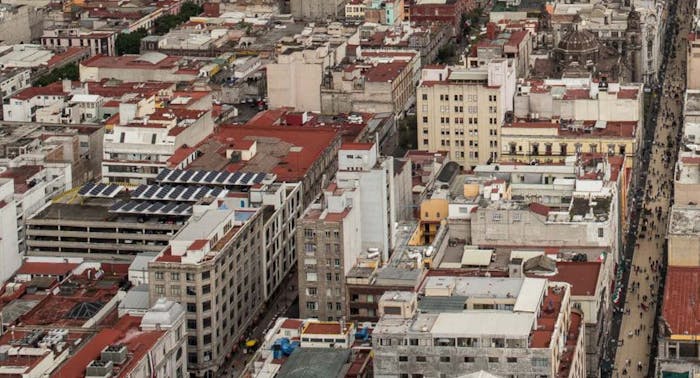A Message from Mexico City's Mayor
This report offers a holistic vision that shows how public space interventions may serve as water infrastructure while part transforming public spaces for the enjoyment of Mexico City inhabitants.
In this way, public investments in infrastructure and urban projects can be maximized, fostering the regional, metropolitan and global competitiveness of Mexico City. It can be used as an example of best practices in sustainability and resilience as well as social and urban development.
[Sound of waves] {Text: World Water Atlas presents} Mexico city is one of th emost thirsty cities in the world. So water security becomes a matter of national security [Dramatic music] You have a very high peaks of water coming up in a shorter period and very low peaks of water coming through the rest of the year. So what we do have, is 20 percent less avialable water each year. [Dramatic music] {Text -'Mexico city The Thirsty City'} Around 40 percent of water is lost in leakages. Almost the amount of water that is consumed in Rome. The city is sinking 30 centimetres, in some areas 50 centimetres per year and that has to do with the overexploitation of the aquifer. "What you see in Xochimilco is exemplary for what happens in the entire city. In some parts there is no water available for the agriculture and in other parts of the city new lakes appear because of substantial subsidence." We can't pass there, as the water level is now too low. That's the problem we're facing here. Good afternoon. Everything is lost because of the lack of water. Our children have different professions they no longer work the land. "They don't want to work in agriculture because it's unproductive. You can't make a living from it." If we are able to improve the water system, we are also able to improve the conditions for the traditional way of agriculture. "We could start with small steps and gain experience in how we could bring back some blue and green infrastructure in the city." There is enough water in the full water cycle of Mexico city. Don't let it go to waste. Never let it leave Mexico city. Use all the water, contaminated or note. Start to clean it, re-use it, bring it back to the aquifer, the natural system, use the water you have. The full capacity water can bring. Wow, yeah, that's the future. [Dramatic Music] [Fading sound of traffic]

 11 Sustainable Cities and Communities
11 Sustainable Cities and Communities
 15 Life On Land
15 Life On Land